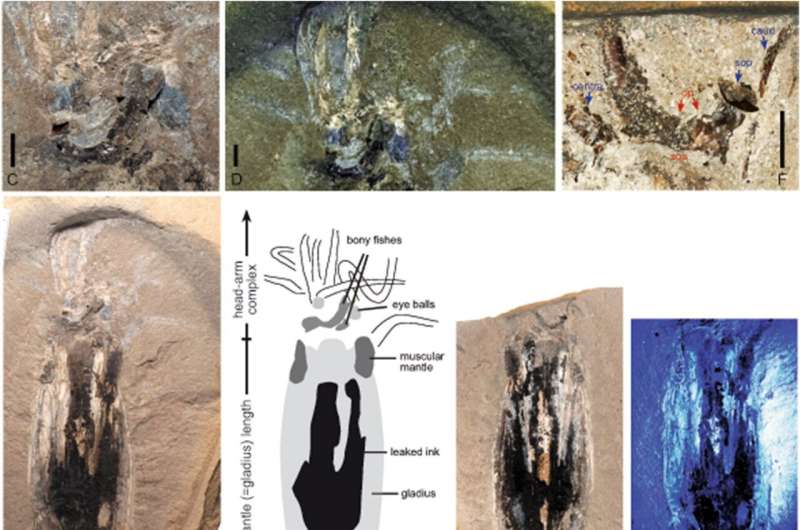February 27, 2024 report
This article has been reviewed according to Science X's editorial process and policies. Editors have highlighted the following attributes while ensuring the content's credibility:
fact-checked
trusted source
proofread
New species of ancient vampire squid unearthed in Luxembourg

A trio of paleontologists in Germany has found a fossilized vampire squid that they dated to 183 million years ago. In their paper published in the Swiss Journal of Palaeontology, Robert Weis, Ben Thuy and Dirk Fuchs describe where the fossil was found, its condition, and how it compares to modern vampire squids.
Vampire squid (vampyromorphs) are a type of cephalopod—they most resemble squid but are actually related more closely to octopi. Several species of vampyromorphs have been discovered, including several that are extinct. They are known for their bioluminescent organs and long, retractable filaments, a feature that distinguishes them from other squid and octopi.
For this new study, the research team further investigated the fossilized remains of a vampyromorph found at a dig site in Bascharage in 2022 and dated it back to the Early Jurassic. They named the new species Simoniteuthis michaelyi.
The researchers found the fossil to be in excellent condition, and it was a complete specimen, which allowed for a detailed study. They also found that the creature had died while in the middle of consuming two small fish—a rare find for any fossil. It measured 38 centimeters long. They describe the find as exceptional due to its quality of preservation. They were able to study what had once been soft tissue structures, such as eyeballs, and muscle tissue, all in great detail.
Prior research suggests that the vampyromorph lived in the shallows off an island that once existed in what is now the heart of the European mainland. The research team believes that the remarkable degree of preservation of this squid is due to unique conditions at the moment of the creature's death. Water at the bottom of the sea where it ventured would have been poorly oxygenated, causing the creature to suffocate. In addition to killing the squid, it would have prevented other creatures from feeding on its remains, allowing it to become buried in the seafloor, wholly intact.
More information: Dirk Fuchs et al, Simoniteuthis, a new vampyromorph coleoid with prey in its arms from the Early Jurassic of Luxembourg, Swiss Journal of Palaeontology (2024). DOI: 10.1186/s13358-024-00303-y
© 2024 Science X Network





















